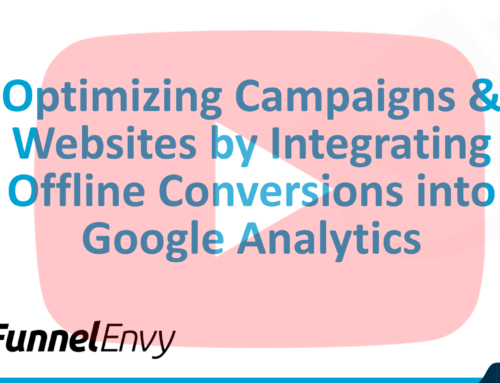Intent to purchase: it is perhaps the least discussed and most important aspect of conversion optimization. Ultimately, you focus on improving your website conversions to attract leads, build better relationships with customers, and most of all make sales. The ability to identify when a customer has a firm intent to purchase gives you a clear advantage. But how can you identify the intent to purchase and take steps to foster it in today’s mobile environment? One new report is offering powerful insights for marketers, entrepreneurs, and data analysts thinking about this issue.
Telmetrics recently released their third annual Mobile Path to Purchase study, in partnership with XAd and the Nielsen Company. Each year, the study seeks to find data, trends, and patterns on what factors are influencing mobile device use in the United States. By extension, the analysts are able to identify consumer mobile usage behaviors and the implications for intent to purchase.
The results provide specific insights into a range of verticals from retail to travel. But there are major takeaways that can inform any mobile strategy.

Mobile devices are everywhere. What does this mean for your business? Image credit: Jay Wennington unsplash.com
The reality of mobile usage: eclipsing desktops and laptops
One look at the Pew Internet Research Project’s mobile usage statistics will quickly show you how ubiquitous mobile devices have become. More than 90% of people own a cell phone, with almost 60% of those being smartphones. Another 42% of the public owns an iPad, Surface, or another tablet. As a result, mobile is playing an increasing role in how users access the internet and conduct every task possible online, from shopping to research.
It’s become so important that the Google Hummingbird updates actually reward websites that are optimized for mobile, and penalize those that aren’t. If you need a tutorial on mobile optimization for SEO, I recommend Search Engine Land’s Google Hummingbird FAQ.
Mobile has also become what the study is calling an “essential everyday shopping tool.” 53% are using mobile devices at home instead of traditional computers, up from 32% just the year before. At the same time, half of respondents consider mobile devices to be their most important tool in the purchase process. Meanwhile, one third of respondents exclusively shop online via mobile devices.
Have you made sufficient investments in your mobile presence considering how important mobile is becoming?
It’s about more than just minimum optimization
The first step in any mobile optimization campaign is making sure that you have a website that looks great and functions well on a wide range of devices. We’ve discussed this previously, including these resources on responsive design and mobile landing pages.
But the Mobile Path to Purchase study suggests that consumers in 2014 and beyond are looking for more than just a functional mobile experience. In fact, that’s the minimum threshold to be taken seriously. Instead, it’s about effectively tapping into a channel where buyers are ready to make buying decisions and are primed for your insights and influence on their purchase process.
The report suggests that mobile usage happens early in the purchase process, at the “top of the funnel.” Respondents revealed that they reach for mobile devices when they start considering a purchase and are very open to suggestions. Only one in five people considered that they knew “exactly what they’re looking for.” The rest are browsing, conducting research, and consuming content.
Understand the levers that tip the balance
While mobile users may be on the hunt for exactly what they need, one thing is clear: there are certain factors that matter when users are doing brand research online via mobile device. The availability of basic information is critical. Consider:
- Pricing information is a top concern. Is your pricing easy to find, clear to understand, and competitive with your industry or indicative of the level of value that you bring if it’s higher than average?
- Location matters. Because mobile users are very likely to convert (more on that soon), 50% are looking for locations within five miles of their current position. This underscores the importance for easy to find contact information and location information on your content, as well as up to date information on social profiles and review sites.
- Good deals get people to take action. 49% are actively looking for discounts and deals. In fact, coupons ranked 33% more important to this year’s respondents than they did in 2013. Whether buyers are becoming savvier or money is just tighter, this points to the idea that easy to find and easy to use discounts can remove important friction in the process.
- A mobile-enabled and easy to find phone number is also key. The ability to find a phone number was 55% more important than it was to respondents in 2013. 53% of mobile shoppers called a business to learn more or speak to a staff member, and local numbers were preferred 3:1 over a toll-free number.
Mobile is a high conversion medium
Perhaps the biggest takeaway from the study is that mobile is a high conversion medium. Nearly 2 out of 3 mobile shoppers make a purchase, and another 16% go on to make a purchase in that same category they researched in the near future. 65% of respondents actually purchase within a day, and in the restaurant and entertainment categories purchases happen within the hour. [Tweet This] A significant number of purchases happen offline as well, arguing the case for mobile optimization for brick and mortar businesses.
So how can you put these recommendations to work in taking advantage of the high intent to purchase and likelihood to convert in your own mobile funnel?
Invest in your infrastructure: Ensure that your website is appropriately optimized for mobile devices. Pay attention to the basic factors that can make or break the mobile experience, such as the ability to activate click to call and find current pricing and location information.
Make yourself easy to find and easy to talk to: Is all your contact information up to date everywhere that matters? Is your latest info available in search engines, review sites, and reference sites such as Yellowpages.com? Have you selected and trained a smart person to answer your phone and handle customer care and inquiries?
Incentivize your conversions: Consider offering exclusive mobile discounts through partnerships with sites like Yelp, SMS marketing companies, or specialized mobile advertising platforms. Users are on the hunt for good deals, and a targeted discount could be enough to get them to purchase now.
Find other mechanisms that imply immediate action: Are you currently using simple touches that say “immediacy” to your visitors? For example, a restaurant might have good results by showing daily specials dated for today, even if the date is something that auto-updates. It suggests that a delicious meal is immediately available to the hungry consumer.
Create content that’s geared toward early buying cycle: When the eager to purchase mobile user finds your website, what information will they have available to them? If they’re seeking more information early in the buying process, do you have the right information to help them make a smart buying decision and understand how your brand is differentiated? Equally important is to ensure that your content is mobile-appropriate: short, focused, and easy to view on a small screen.
Understanding how to make the most of the opportunities that mobile creates is a challenge for even the most seasoned online entrepreneurs. It’s a channel that’s growing rapidly, and consumer behaviors are evolving in real-time. Take the time today to invest in the foundation, and experiment and test solutions to see what works with your mobile funnel.
What’s working for you right now in terms of mobile optimization? Are you seeing similar behaviors among your customers? Let me know in the comments below.






